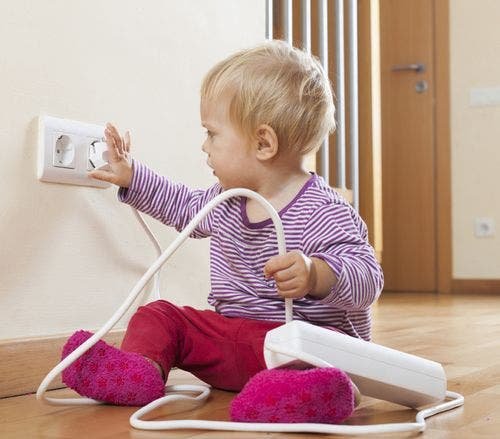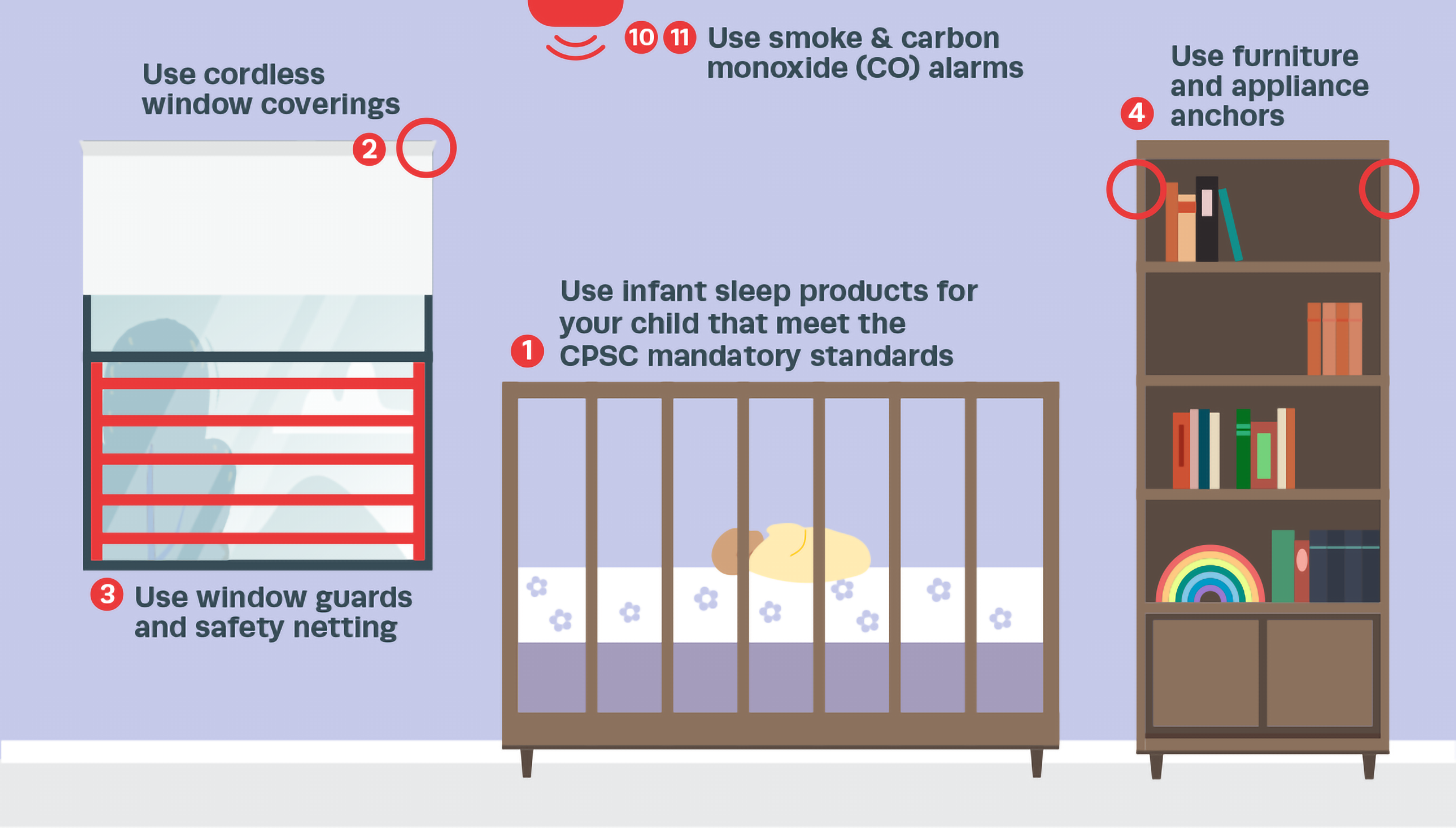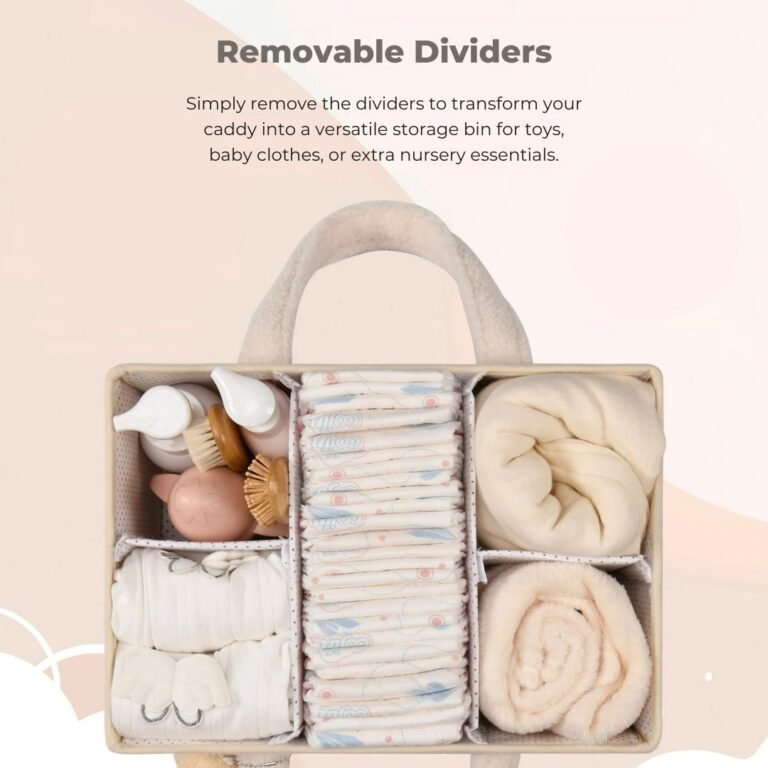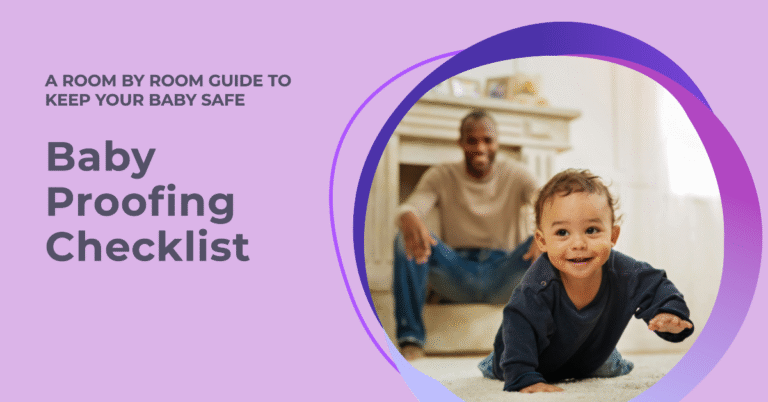How to Babyproof Your Home on a Budget: Easy Tips

Keeping your little one safe is a top priority, but it doesn’t have to break the bank. When you start thinking about babyproofing, the sheer number of products and solutions can be overwhelming—and expensive.
Luckily, you can babyproof your home effectively without spending a fortune. Imagine the peace of mind you’ll have knowing your home is safe for your curious explorer, all while keeping your budget intact. You’ll discover clever tips and cost-effective strategies to transform your home into a secure haven for your baby.
Dive into simple solutions that will protect your child and your wallet. Keep reading to find out how to babyproof your home on a budget, because a safe home shouldn’t come with a hefty price tag.
Identify Potential Hazards
Babyproofing your home doesn’t have to be expensive. Identifying potential hazards is the first step. Knowing where dangers lurk helps keep your baby safe. Start by observing your home through your baby’s eyes. Get down on their level. Notice what they might touch or reach. This perspective reveals hidden dangers you might overlook.
Common Household Dangers
Many common household items can pose risks to babies. Electrical outlets are a big concern. Babies love to explore with their fingers. Cover outlets with inexpensive plastic covers. Cords from blinds and curtains are also dangerous. Keep them out of reach to prevent strangulation. Sharp edges on furniture can cause injuries. Use corner protectors to soften these edges.
Chemicals and cleaning supplies are hazardous too. Store them in locked cabinets. Small objects like coins and batteries are choking hazards. Keep them out of your baby’s reach. Remember, even plants can be harmful if ingested. Research your plants and move toxic ones out of reach.
Creating A Safety Checklist
Create a safety checklist to ensure nothing is overlooked. Start with each room in your home. Check for potential hazards in the kitchen, living room, and bathroom. List each item that needs addressing. This keeps you organized and ensures thoroughness. Prioritize tasks based on immediate danger. Focus on high-risk areas first, like the nursery and kitchen.
Keep track of completed tasks. This gives you peace of mind. Update your checklist as your baby grows. New risks will emerge as they start crawling and walking. Stay proactive and adjust your checklist accordingly. Regularly reviewing your safety measures ensures continuous protection.

Credit: www.pinterest.com
Affordable Safety Equipment
Ensuring your baby’s safety doesn’t have to break the bank. Affordable safety equipment can help protect your little one without straining your finances. From corner guards to outlet covers, budget-friendly options abound. Parents can find practical solutions to keep their homes secure, all while sticking to a budget.
Diy Babyproofing Solutions
Create homemade barriers with everyday items. Use towels to soften sharp corners. Secure cabinets with rubber bands. Block stairways with cushions. These simple solutions can prevent accidents and save money. No need for costly equipment when household items can do the trick.
Budget-friendly Store Options
Discount stores offer affordable safety gear. Look for child locks and outlet covers. Browse dollar stores for low-cost corner guards. Many stores sell bundles at reduced prices. These options provide safety without high expenses. Explore local shops to find deals on babyproofing essentials.
Securing Furniture And Appliances
Ensure your child’s safety by securing furniture and appliances. Use affordable brackets and straps. Prevent accidents with simple DIY solutions. Keep your home safe without breaking the bank.
Securing furniture and appliances is crucial for a safe home environment. Kids are curious explorers. They often find ways to climb or interact with objects. This makes it vital to ensure that furniture and appliances are secure. Doing this on a budget requires smart strategies. Here are some practical tips to help you babyproof your home effectively.Preventing Tip-overs
Furniture can easily tip over if not secured properly. Use furniture straps or brackets to anchor items to walls. These are affordable options that keep heavy items stable. Bookshelves and tall dressers are common hazards. Ensure they are fastened securely. Avoid placing tempting items, like toys, on top. This reduces the urge for climbing.Safe Appliance Usage
Appliances pose risks if not used safely. Secure cords and wires out of reach. This prevents accidental pulling or tripping. Use covers for unused outlets. They are inexpensive and easy to install. Locking mechanisms for ovens and refrigerators add an extra layer of safety. Remember to keep small appliances unplugged when not in use. This minimizes risks of accidents. These steps help in creating a safe home environment. They are cost-effective and easy to implement. Your baby’s safety is a priority, and with these tips, you can ensure a secure space without spending much.
Credit: purenaturalnewborn.com
Childproofing Doors And Windows
Ensure your child’s safety with affordable babyproofing solutions for doors and windows. Use simple latch guards and window stoppers to prevent accidents. Easy installation makes it budget-friendly and effective.
Childproofing doors and windows is a crucial step in creating a safe environment for your little one without breaking the bank. You might be surprised at how many affordable options exist to keep curious hands and feet from venturing into unsafe areas. Let’s dive into some budget-friendly strategies to ensure your home is secure without sacrificing your savings.Inexpensive Lock Options
One of the simplest ways to childproof doors is by using inexpensive locks. Consider installing door knob covers. These are typically under $10 and make it difficult for little ones to grip and turn door handles. Sliding door locks are another budget-friendly option. They are easy to install and prevent kids from opening patio doors or glass sliders. If you’re a fan of DIY projects, velcro straps can be an effective alternative. Cut a strip and attach it between the door and the frame. It’s not only cost-effective but also easy to remove when you need access.Window Safety Tips
Windows pose a significant risk, especially for toddlers. Window guards are essential and surprisingly affordable. They prevent your child from pushing a window open too far. You can also use window stoppers, which limit how much a window can open. This is a simple but effective way to prevent accidents. Do you have blinds with cords? Replace them with cordless blinds or use cord wind-ups to keep them out of reach. Safety doesn’t have to be expensive, and these small changes can make a big difference. Think about where your furniture is placed. A table or chair under a window can be an invitation for climbing. Rearrange your room layout to eliminate these climbing aids. Remember, childproofing is not just about gadgets; it’s about creating a safe space. Have you tried some of these tips in your home? Share your experiences and let others know what worked for you.Kitchen And Bathroom Safety
Babyproofing can be affordable with simple adjustments in kitchens and bathrooms. Cover sharp edges with foam or soft fabric. Secure cabinets using inexpensive locks to prevent curious hands from accessing harmful items. Use non-slip mats to ensure safety and stability in wet areas, reducing potential falls.
Ensuring the safety of your little one in the kitchen and bathroom doesn’t have to break the bank. These areas are filled with potential hazards, from sharp objects to slippery floors. But with some smart planning and low-cost solutions, you can create a safe environment without overspending. Imagine the peace of mind you’ll have, knowing your child can explore these spaces safely. Let’s dive into some effective strategies for babyproofing your kitchen and bathroom on a budget.Low-cost Solutions For Kitchens
The kitchen can be a danger zone for toddlers, but you can easily minimize risks. Start by securing cabinets with inexpensive safety locks. Many options are available online or at your local store for just a few dollars. This simple step keeps curious hands away from cleaning products and sharp utensils. Think about installing corner guards on countertops. They’re cheap and can prevent painful bumps. Remember the time your little one nearly knocked their head on the counter edge? Corner guards would have softened the blow. Use elastic bands or hair ties as a budget-friendly alternative for securing refrigerator doors. This can deter children from opening the fridge and pulling out items that could be harmful or messy.Bathroom Hazard Prevention
Bathrooms pose unique challenges, but small adjustments can enhance safety. Consider using non-slip mats in the bathtub and on the floor to prevent accidents. They’re an affordable way to create a safer bathing environment for your child. Keep toiletries and cleaning products out of reach. Store them in high cabinets or use wall-mounted racks. It’s surprising how quickly toddlers can reach for those colorful bottles. To prevent scalding, set your water heater to a safe temperature. A simple adjustment can make a huge difference, ensuring that bath time remains enjoyable and safe for your child. Finally, cover electrical outlets with inexpensive plug covers. These tiny devices can prevent your child from inserting objects into the outlets, eliminating a major risk. By applying these budget-friendly tips, you transform your home into a safer space for your child. What other creative solutions have you found effective in your home? Your experience could be the key to helping another parent in need.
Credit: www.cpsc.gov
Electrical And Fire Safety
Ensuring electrical and fire safety is crucial when babyproofing your home. Babies are naturally curious and can get into trouble easily. Keeping your little one safe from electrical hazards and fire risks is vital. It doesn’t have to be costly. You can take simple, effective measures without spending a fortune.
Covering Outlets On A Budget
Exposed outlets are dangerous for children. Use outlet covers to prevent accidents. You can find affordable options at dollar stores or online. Safety plugs are an inexpensive solution. They fit snugly into outlets and keep little fingers safe. Alternatively, use furniture to block access to outlets. Rearrange your room layout to hide outlets behind couches or shelves.
Fire Safety Measures
Fire safety is essential for protecting your family. Install smoke detectors in every room. Check them regularly to ensure they work. Inexpensive smoke alarms are available at home improvement stores. Keep a fire extinguisher in the kitchen. It should be within easy reach. Teach older children about fire safety. Practice escape plans with the whole family. Unplug appliances when not in use. This reduces fire risk and saves energy. Avoid overloading electrical outlets. It can cause overheating and lead to fires. Use power strips with built-in circuit breakers for extra safety.
Living Room And Bedroom Tips
Create a safe home for your baby without spending much. Use pool noodles on sharp furniture edges. Secure cabinets with rubber bands or simple latches. Keep small items out of reach. Rearrange furniture to block dangerous areas. Prioritize safety while staying within your budget.
Creating a safe environment for your little one doesn’t have to break the bank. The living room and bedroom are spaces where your baby will spend a significant amount of time. By focusing on these areas, you can ensure your child’s safety without spending a fortune. Here are some practical and budget-friendly tips to babyproof these essential parts of your home.Safe Play Areas
Designate a specific area in your living room for your baby’s playtime. Use a soft, washable mat to cushion any falls. You don’t need to buy expensive playpens; consider using furniture to create a safe boundary. Inspect your space for potential hazards. Cover sharp corners with inexpensive corner guards or even homemade ones. Simply cut and tape foam pool noodles around sharp edges. Keep cords and small items out of reach. Use cable ties to tidy up wires, and store small objects in high cabinets or shelves.Bedtime Safety Practices
Choose a crib with adjustable mattress heights. As your baby grows, lower the mattress to prevent climbing accidents. Avoid spending on fancy crib bumpers, which can be a suffocation hazard. Keep blankets and toys out of the crib. A fitted sheet is all your baby needs for a safe sleep. Remember, less is more when it comes to crib safety. Use a nightlight to create a calming bedtime environment. Opt for an energy-efficient LED light that won’t increase your electricity bill. Have you ever noticed how much more relaxed you feel when everything is in its place? The same applies to your baby. A tidy and organized room not only looks better but also reduces the risk of accidents. These simple changes can make a big difference. By being resourceful and thinking creatively, you can keep your baby safe without overspending. What other budget-friendly babyproofing tips have you discovered? Share your insights in the comments below!Outdoor Area Precautions
Creating a safe outdoor space for your baby doesn’t have to be costly. Use soft mats to cover hard surfaces and secure gates to block stairways. Keep harmful plants and tools out of reach.
Ensuring your outdoor area is safe for your little one doesn’t mean you need to spend a fortune. With a bit of creativity and some smart choices, you can babyproof your yard without breaking the bank. Remember, your child’s safety is paramount, but that doesn’t mean it has to be costly.Yard Safety On A Budget
Begin by assessing your yard for potential hazards. Look for sharp objects, thorny plants, or small items that might be a choking hazard. Consider using a simple checklist to keep track of potential dangers. This makes the task less daunting and ensures nothing is overlooked. Natural barriers like hedges or large planters can serve as effective and low-cost safety solutions. They can help block off areas you don’t want your child to access. If your yard has a pond or pool, ensure it’s securely covered or fenced. You can find affordable safety nets or second-hand fences online or at local community markets. Repurpose old items like pallets to create makeshift gates or barriers. This approach is not only budget-friendly but also eco-friendly.Securing Outdoor Equipment
Outdoor equipment like grills, lawnmowers, and tools should be stored securely. Use locks or latches to keep sheds and storage areas closed. If you don’t have a shed, consider using a simple tarp with bungee cords as a temporary solution. It’s an inexpensive way to keep equipment out of sight and mind. Sandbox covers can be made from old tarps or spare wooden planks. This keeps animals out and ensures the sand stays clean for your child. Think about securing your outdoor furniture. Windy days can turn lightweight chairs into hazards. Weigh them down with sandbags or attach them to the ground using inexpensive anchors. Finally, always keep an eye on your child when they’re playing outside. Even with all precautions in place, nothing replaces active supervision. Have you ever thought about what items in your yard could pose a risk? Taking a moment to reassess with a fresh perspective can unveil hidden dangers. Protecting your child can be simple and cost-effective with these practical tips.Frequently Asked Questions
How Can I Babyproof My Home Cheaply?
Babyproofing on a budget is possible with creativity. Use pool noodles for sharp edges and rubber bands for cabinets. Secure cords with zip ties and repurpose old socks for door stoppers. Thrift stores often have affordable baby gates and outlet covers.
Prioritize areas where your baby spends the most time.
What Are Essential Budget-friendly Babyproofing Items?
Essential items include outlet covers, cabinet locks, and corner protectors. These are affordable and effective. Use non-slip mats for rugs and secure furniture with inexpensive brackets. DIY solutions like pool noodles for sharp edges are cost-effective. Focus on high-traffic areas where your baby plays or crawls.
Can I Babyproof Without Professional Help?
Yes, you can babyproof without hiring professionals. Online tutorials offer step-by-step guidance. Many solutions, like outlet covers and cabinet locks, are easy to install. DIY hacks such as securing cords with zip ties save money. Assess your home for hazards and take proactive steps to secure them yourself.
How Do I Prioritize Areas To Babyproof?
Focus on high-risk areas where your baby spends time. Start with the nursery, living room, and kitchen. Secure outlets, cabinets, and sharp furniture edges. Prioritize securing stairs with gates and keeping small items out of reach. Evaluate your home from your baby’s perspective to identify potential dangers.
Conclusion
Creating a safe home for your baby doesn’t need a big budget. Small changes can make a big difference. Secure furniture and cover sharp edges. Use outlet covers and cabinet locks. Keep harmful items out of reach. You can find affordable solutions at local stores or online.
Remember, safety is the priority. Plan wisely and focus on important areas. Your baby’s safety is priceless. Taking these steps gives peace of mind. Enjoy your time with your little one. Feel confident that your home is safe. It’s about smart choices and caring for your child’s well-being.



